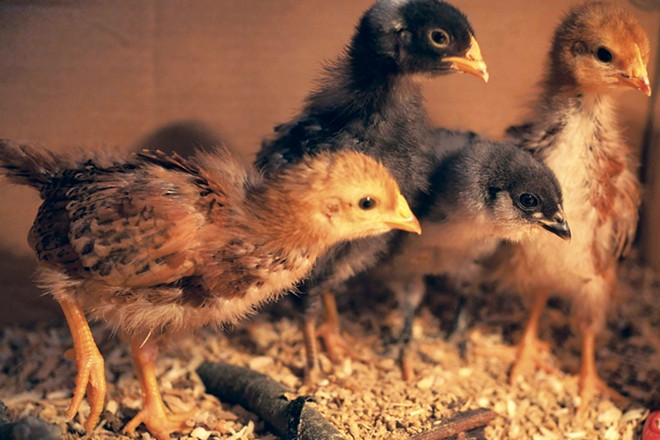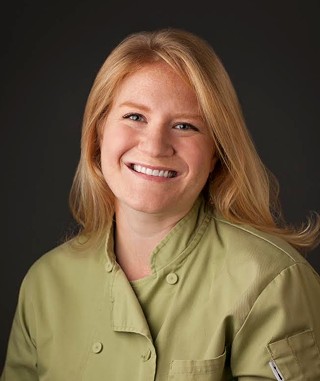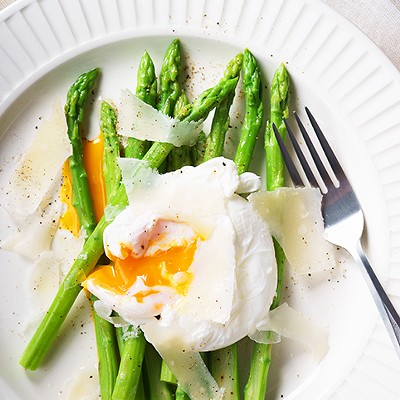If you've ever stopped to admire fluffy chicks that appear at farm supply stores each spring, you may have contemplated bringing home a flock of your own. Keeping hens is likely the most approachable form of animal husbandry with a myriad of rewards, including access to scrumptious fresh eggs, reduced kitchen waste and the sheer enjoyment of having them around. Even city folks can turn their house into a homestead with the addition of a few feathered friends, although it's important to check the ordinances where you live. Chickens (but not roosters) are allowed to be kept in Springfield as long as they are fenced in; however, nearby villages and townships may have different rules. The village of Jerome for example, does not allow chickens.

In many ways, keeping chickens isn't much more work than caring for a house cat, and these ladies can at least give you breakfast. There are some important considerations, however, when deciding if the clucky life is right for you. Chickens require daily care, which includes letting them out each morning (although automated chicken doors can allow for sleeping in), keeping their food and water full, and perhaps the greatest delight, collecting fresh eggs. The coop will need to be deep-cleaned a couple times a year, depending on its size and how many birds you have, and in the winter, you'll need to use a submersible heater to keep their water thawed.
If this sounds doable, the next consideration is the type and quantity of chickens you'll want. There are a range of varieties available at most area farm stores, and a dizzying array that can be ordered from commercial hatcheries. For beginners, it's best to get breeds that are known to be especially docile, such as Buff Orphington, Black Australorp and Easter Egger, a hybrid variety that lays colorful eggs ranging from olive green to pink. Chickens are social animals, so keeping at least three hens is important for their well-being. One chicken per person is a good ratio for keeping your family supplied with eggs. Depending on the breed, you can expect a chicken to produce about 200 eggs in their first year of laying. That number will go down slightly each year as they age, but the eggs will be larger with bigger yolks.
Before you bring your babies home, a brooder should be set up to keep them warm and safe until they are old enough to move into their permanent quarters. It is essential that it be set up in a dry, draft-free area that is free from predators or curious toddlers. New chicks will need about half a square foot of space each until they are about four weeks old, at which time they'll need about three-fourths square foot each. A plastic wading pool or tub works extremely well as long as it has sides at least 18 inches tall (you'll quickly learn they can jump pretty high).
Chicks reared by a mama hen depend on her for warmth because they can't regulate their body temperature on their own. This is typically replicated with the use of a 250-watt heat lamp suspended over part of the brooder with a chain so that it's about two-and-a-half inches over the litter on the floor. For the first week, the chicks will need constant heat of about 95 degrees Fahrenheit when measured directly under the light. It's critical that the brooder be set up so the chicks can move under the lamp to warm up but also enough space to move to a cooler zone if they get too warm. Thermostats are useful, but observing the chicks' behavior is key. You'll know the brooder is at the right temperature when the chicks are evenly spread about. If they are all clustered together under the light, that indicates the temperature is too low; however, if they are all pressed against the sides of the brooder as far away from the light as possible, this is an indication that the temperature is too high. Gradually reduce the temperature by five degrees by raising the chain of the light about one inch every week, until the brooder temp is about 65 degrees. At this point, the babies are ready to transition into their permanent housing.
Chicken coops don't need to be fancy, but they do need to be well-insulated, ventilated and provide protection from predators. If you're handy with a hammer there are loads of DIY plans ranging from rudimentary to luxe. Repurposed doghouses or sheds are also excellent options. Regardless of what type of coop you decide on, it should allow a minimum of three to four square feet inside the coop per chicken. Modern chickens are descended from jungle fowl and, despite being domesticated, they still have the urge to roost off the ground, so they'll need something for them to perch on at night. Wood roosts about two inches in diameter are ideal – just make sure they're removable to facilitate cleaning. Sturdy, natural branches are free and the preferred perch for most hens. And of course, nesting boxes are essential. Again, these can be fancy or repurposed and free, like milk crates turned on their sides. City folks (and anyone with a garden to protect) will need a fenced-in run where their girls can roam during the day, about 10 square feet per bird.
Chickens will start laying around 18 weeks old. The eggs will be small initially but will gradually reach normal size after a few months. You'll soon be spoiled by the incomparable taste of fresh eggs and find that any surplus supply can be quickly distributed to friends and neighbors or find their way into a myriad of recipes. Check out this week's food column on page 33 for fool-proof techniques for preparing the perfect eggs every time.
Ashley Meyer is a Springfield-based writer, cook and wine educator. She grew up doting on her next-door neighbor's colorful backyard chickens and has had her own flock for nearly a decade. She currently has 12 chicks rapidly growing in a brooder and will likely add a few more before the season is over.






















